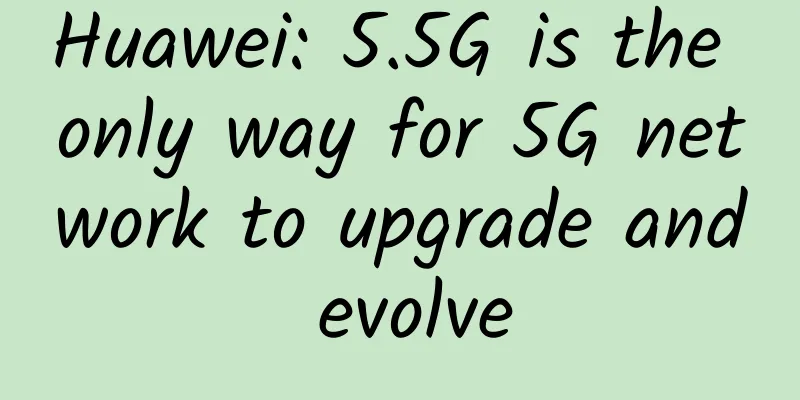The Internet of Things is gradually entering a new era. These will affect our lives in the future.

|
Today, the rapidly developing IoT devices can really help people in their daily lives, making people's lives easier by providing connectivity and smart services. The Internet of Things (IoT) continues to gain momentum. It cannot be denied that we are experiencing an era of intelligent interconnection of all things, and the speed at which data is generated has exceeded the imagination of ordinary people. In the development of the Internet of Things, two key factors will play an important role: one is artificial intelligence; the other is edge computing.
Key factor 1: Artificial intelligence As AlphaGo defeated the best human chess player using reinforcement learning technology, we have recently seen that artificial intelligence applications have begun to be realized in some edge intelligence application scenarios. However, the development of artificial intelligence as a whole is inseparable from data, because it requires a large amount of data for training. As more and more unstructured data need to be processed and we need to discover the inherent connections from the unstructured data, artificial intelligence technology is the refinement of it. Key Factor 2: Edge Computing The increase in data volume is also driving the evolution of the entire computing model: In the Internet era, the Internet uses cloud computing platforms to enable users to access the resources they need anytime and anywhere. Cloud computing technology can help realize resource sharing and provide users with an excellent user experience. During the just-passed Double 11, the sales peak on Tmall Mall exceeded 2.5 billion per second. To support such a large amount of computing, the cloud computing platform has played an indispensable role. In the era of the Internet of Things, with the digital transformation, it requires more agile connections, more efficient data processing, and better data protection. Edge computing can effectively reduce bandwidth requirements, provide timely responses, and protect data privacy. It can be seen that edge computing plays an increasingly important role. The author believes that edge computing is becoming the pillar of the development of the Internet of Things. The development trend of the Internet of Things in the next ten years: The first is the unification of IoT standards. Under the current concept of IoT, many countries and organizations around the world have formulated corresponding standards, including: EPC standard, one of the most widely used standards in the world; ISO standard formulated by the International Organization for Standardization; UID standard promoted by Japan; EPCglobal standard promoted by the EPCglobal Management Committee of the International Article Numbering Association, etc. my country is also stepping up the formulation of relevant IoT standards in combination with the technical standards of Europe, Japan and the United States. Without rules, there will be no order. As the Internet of Things develops, it is foreseeable that in the next decade, the standards of the Internet of Things will be gradually unified after fierce competition among countries, industries, and enterprises, forming several international standards for countries and enterprises around the world to follow. In other words, whoever is at the forefront of the world in formulating standards will have the right to speak in the future Internet of Things industry. Secondly, there will be a large integration in the three industrial chains of IoT sensing, transmission and application, forming an oligopoly. Although the concept of IoT is new, it is not an industry that came out of thin air. Currently, some Internet companies and telecommunications giants in the transmission field have begun to get involved in the IoT field. Given the huge market prospects of the Internet of Things, I believe that more large companies in various industrial chains will strongly integrate the entire industrial chain, and the possibility of an oligopoly in the Internet of Things in the next decade is very high. The emergence of monopoly will have a significant impact on my country's political, economic and social stability. In this regard, we must have a clear understanding and take action as soon as possible at the institutional and legal levels. China's advantage in developing the Internet of Things lies in the fact that my country started research on the core technology of the Internet of Things - sensor network technology - as early as 1999, and its research and development level is at the forefront of the world; in terms of Internet of Things infrastructure, my country's wireless communication network and broadband coverage are high, providing solid infrastructure support for the development of the Internet of Things; in terms of economic strength, my country has become the world's third largest economy and has relatively strong economic strength to support the development of the Internet of Things; at the same time, the strong support and guidance of government policies have created favorable conditions for the rapid development of the Internet of Things. The Internet of Things is divided into four stages: the first stage is the networking of mainframes and hosts, the second stage is the connection of desktops and laptops to the Internet, the third stage is the interconnection of some mobile devices such as mobile phones, and the fourth stage is the rise of embedded Internet. More application devices closely related to people’s daily lives, including washing machines, refrigerators, televisions, microwave ovens, etc. will join the ranks of interconnection and eventually form a global unified "Internet of Things". The Internet of Things has become a globally recognized future development trend. It is currently gaining popularity throughout society at a very fast pace, changing industries and elevating them to new heights, such as the healthcare industry, the financial industry, and so on. New opportunities emerge almost every few months. |
<<: 6 AI Elements You Need for a Wireless Network Strategy
Recommend
The number of Internet users in my country has reached 1.011 billion, and the Internet penetration rate has reached 71.6%.
According to the website of China Internet Networ...
IoT and 5G: A blessing or a curse?
The UK's recent decision to phase out Huawei ...
The Tonghu Science City project started construction to create a "super cloud store terminal data" industrial ecosystem and effectively promote the upgrading of Huizhou's information industry
City leaders Chen Yiwei, Mai Jiaoming, Huang Yanx...
Start your digital transformation journey
[[402875]] Railways are the backbone of sustainab...
As containers become more widely used, how should we monitor them?
With the booming development and implementation o...
PoE Basics: Do You Really Understand PoE?
By transmitting both data and power over the same...
Following FPA and Karaoke Room, Agora released a series of new products including CDN live streaming to expand the boundaries of RTE products
On October 22, the RTE2021 Real-time Internet Con...
The Ministry of Industry and Information Technology has implemented new measures to promote the accelerated development of 5G and accelerate the construction of the new economic form of "5G+".
my country's 5G development has once again re...
Ruijie's "Pioneer Wireless Office" settled in the Fortune 500 Kangmei Pharmaceutical and solved Wi-Fi problems in depth
Today, deploying Wi-Fi has become an important pa...
Maxthon Hosting: 56 yuan/month KVM-2GB/40GB/400GB/Korea CN2, Hong Kong CN2, Japan, US CN2, etc.
Aoyozhuji, a long-established foreign VPS service...
Aruba changes the rules of the game to drive three major changes in network management
When the first iPhone was released in 2007, Steve...
How to “prevent” programmers from slacking off at work?
[[344451]] This article is reprinted from the WeC...
OneTechCloud starts at 30% off, Hong Kong BGP/CN2, US CN2, CN2 GIA high defense optional
OneTechCloud (Yikeyun) continues to offer promoti...
Wi-Fi 6 certification, here are 6 issues worth paying attention to!
This article is reproduced from Leiphone.com. If ...
The three major telecom operators are accelerating the construction of 5G networks and data centers
Seizing the opportunity of the country's &quo...









